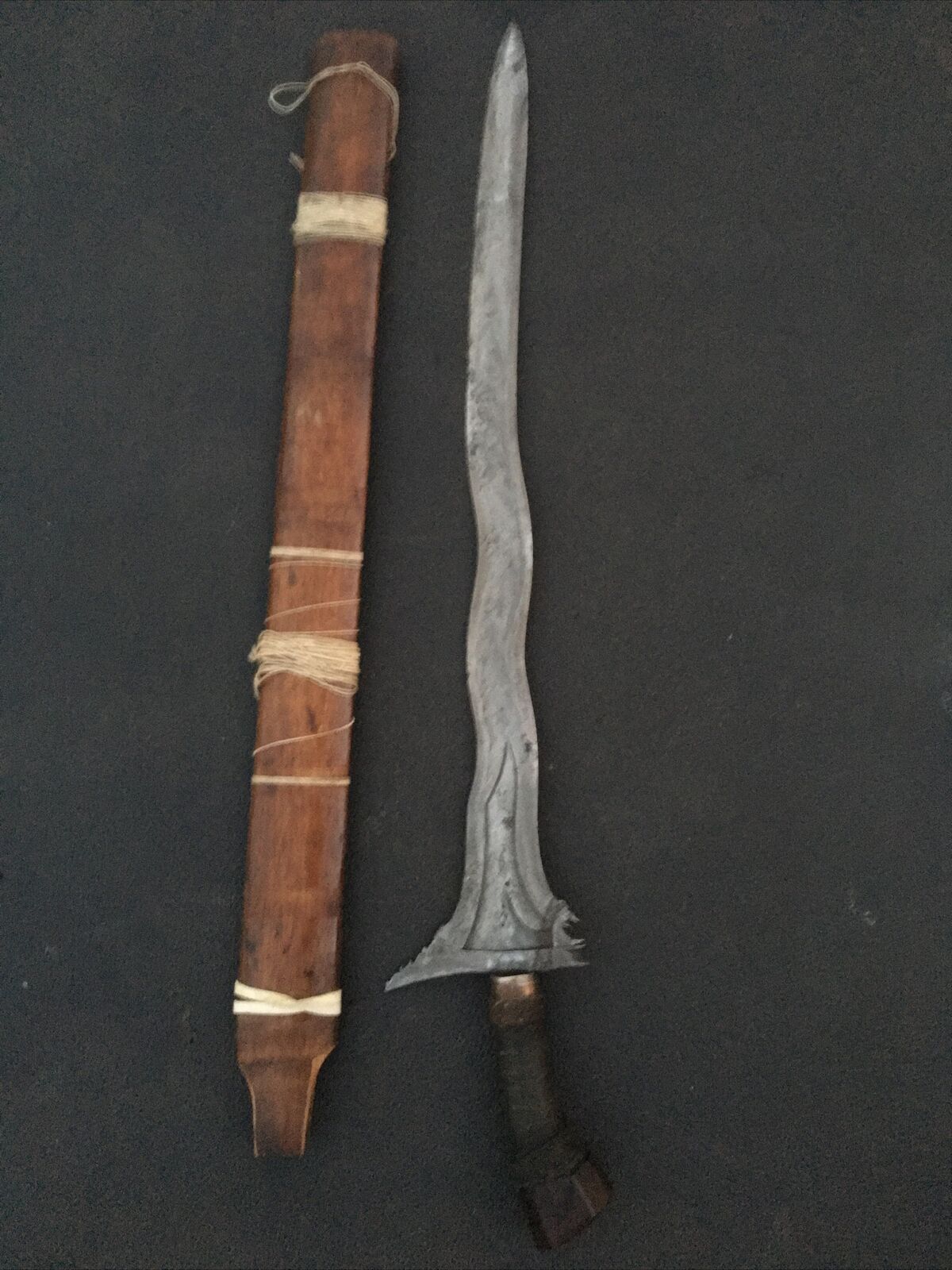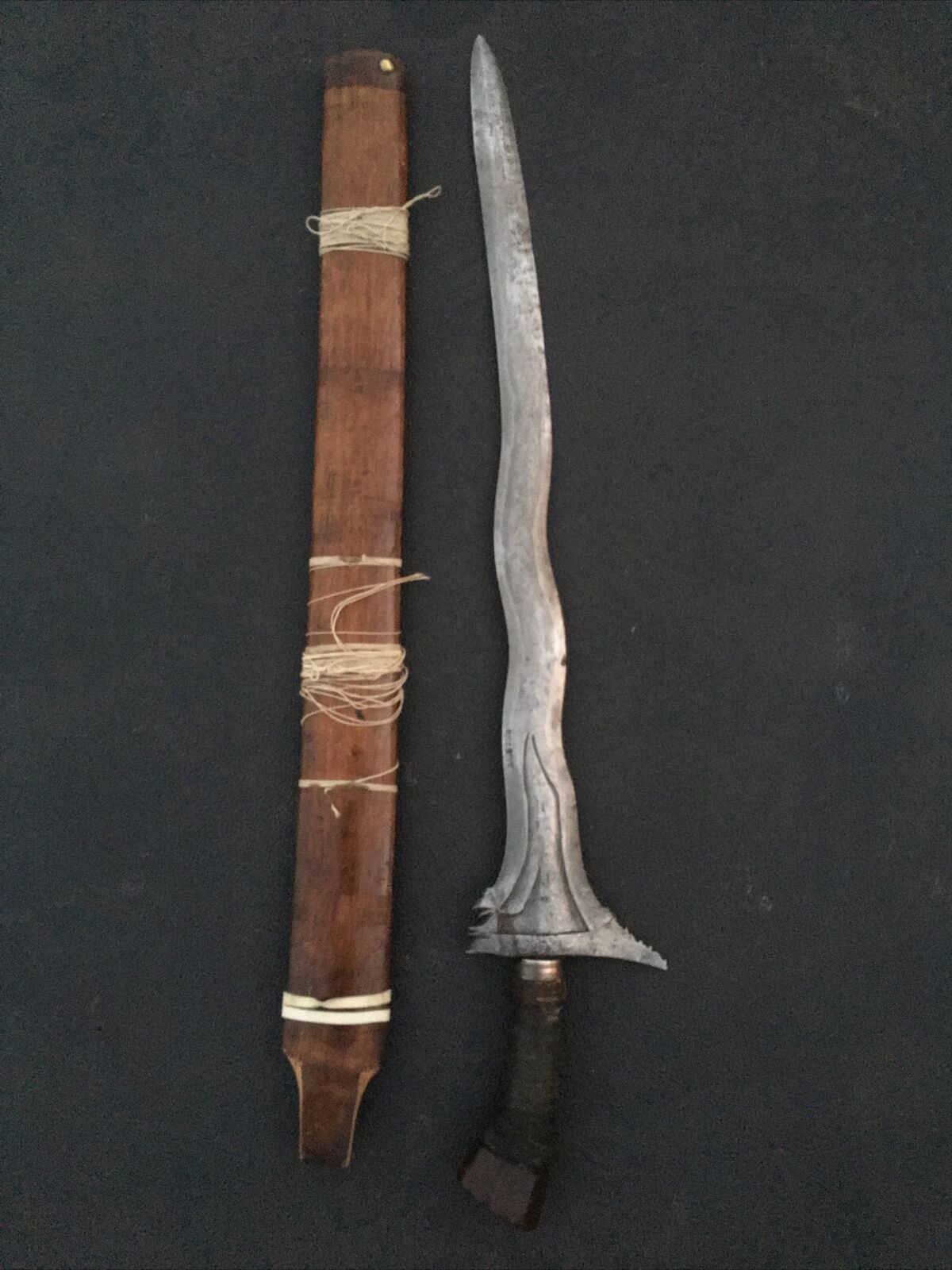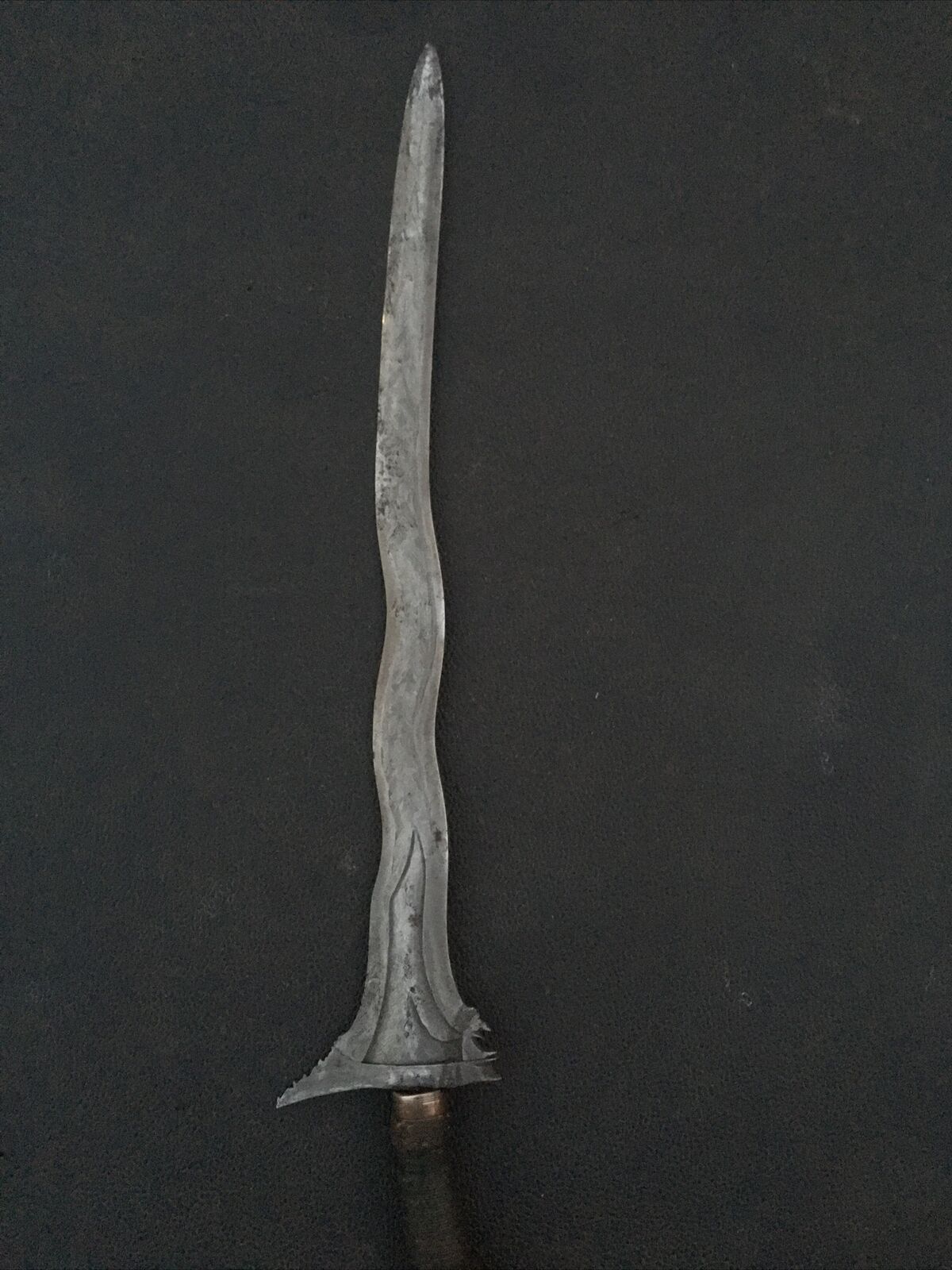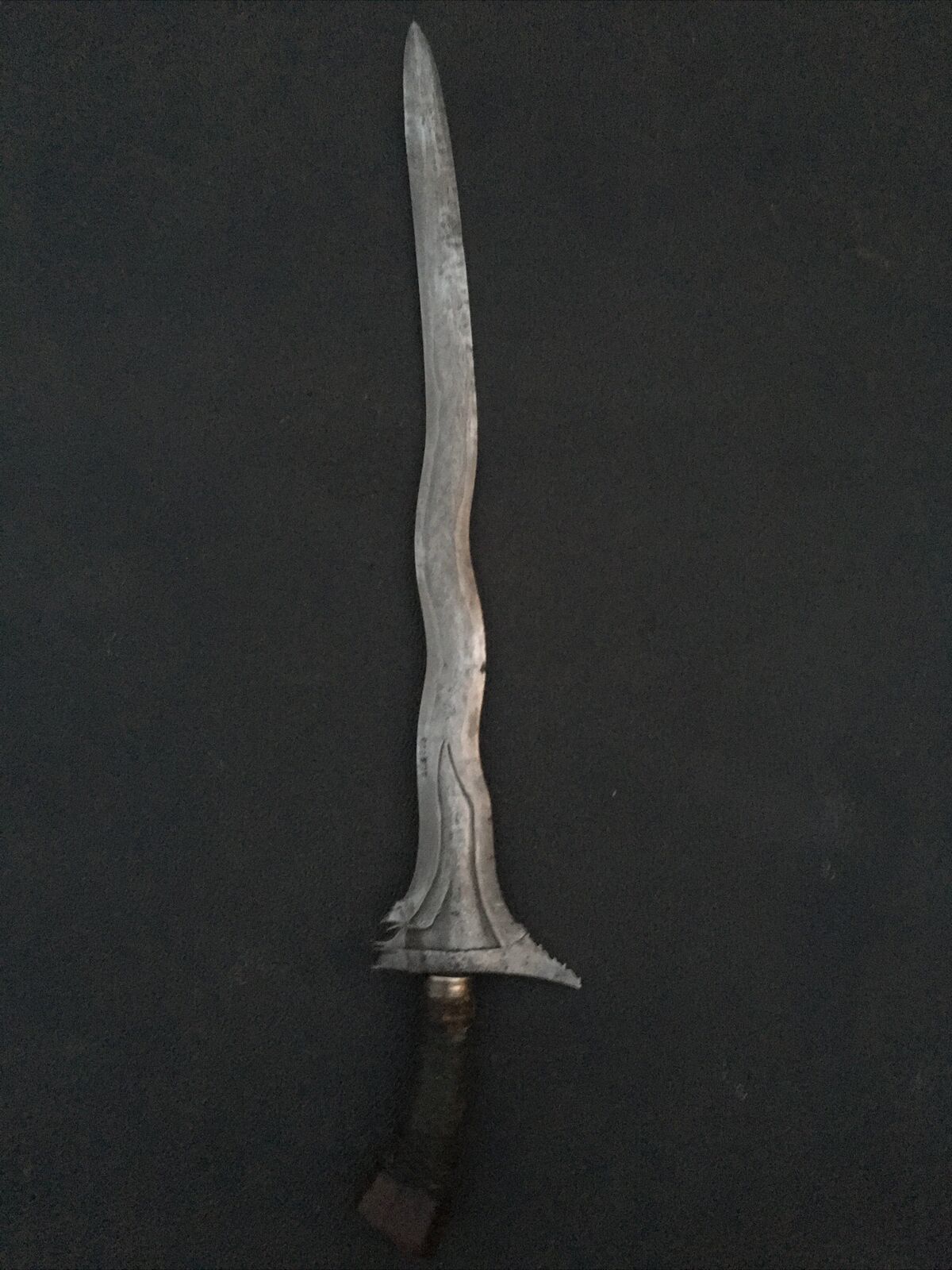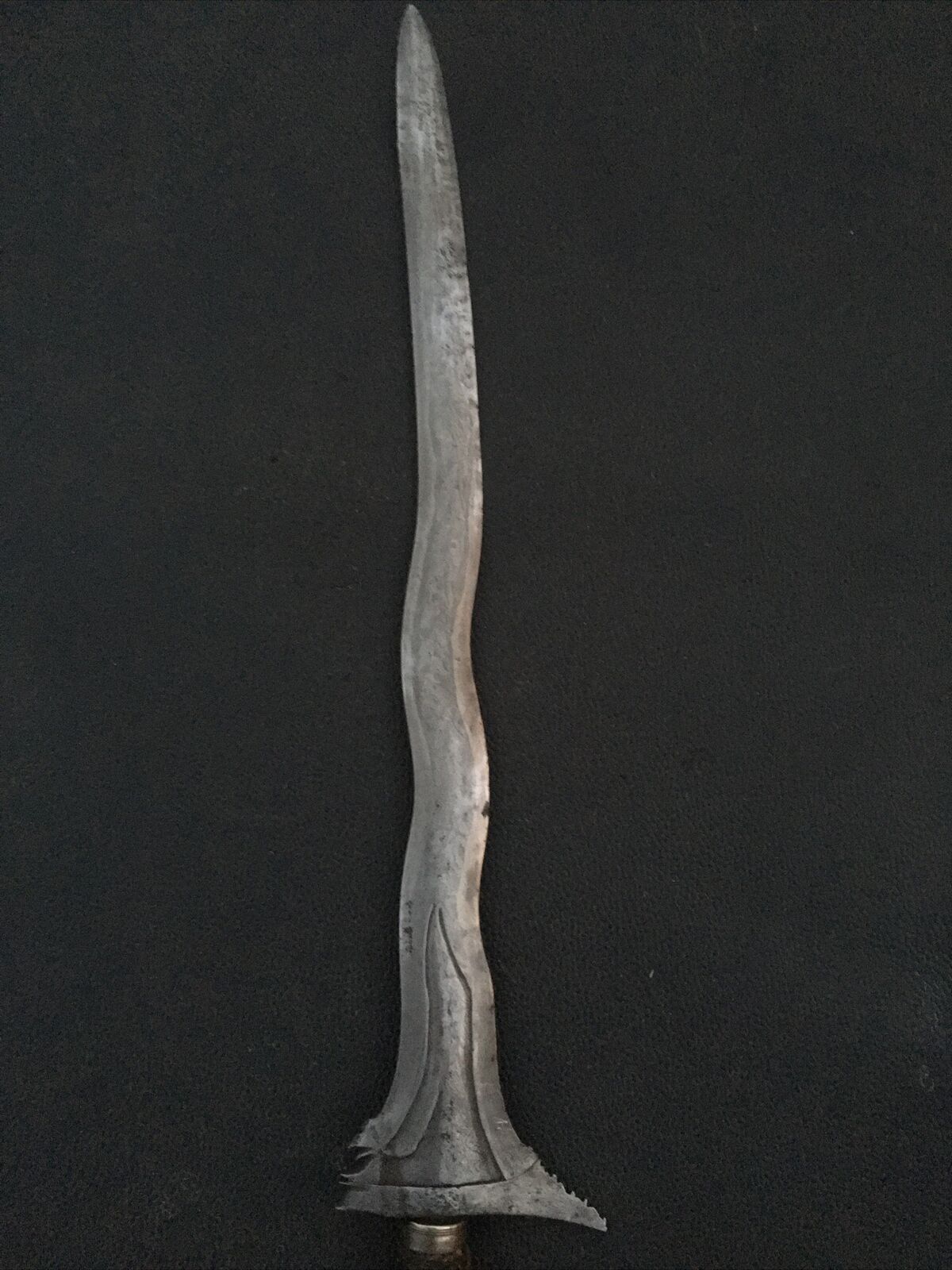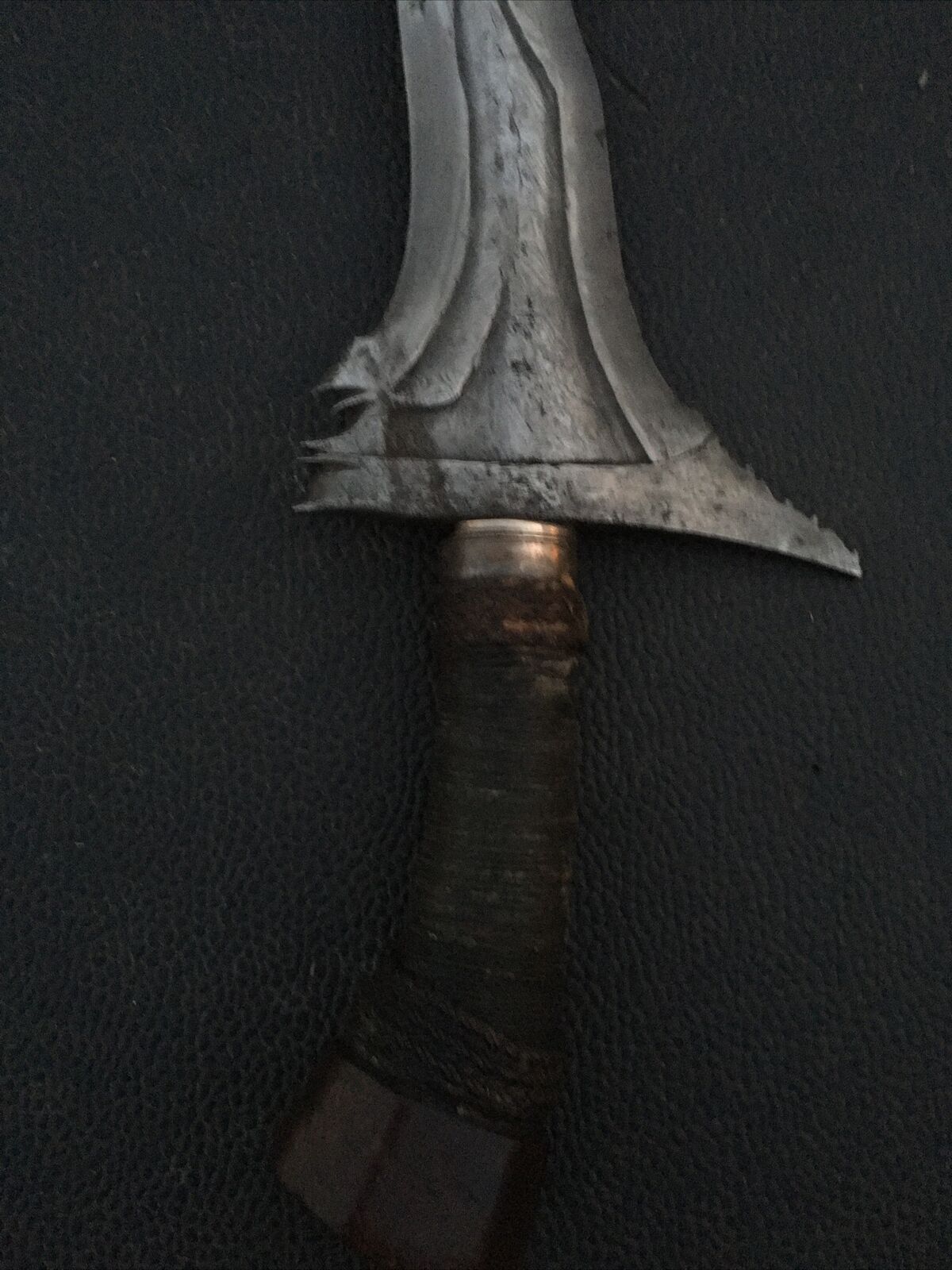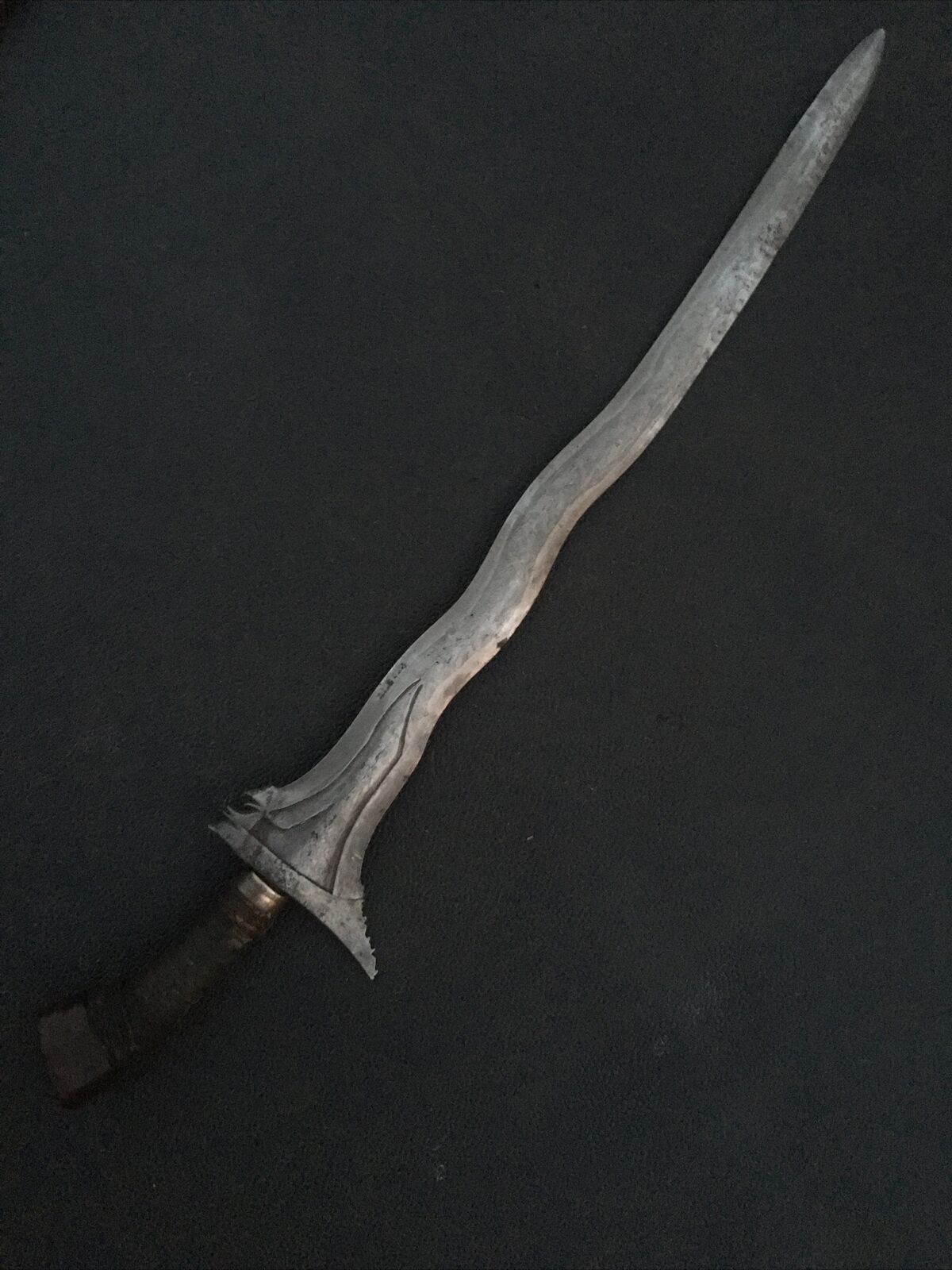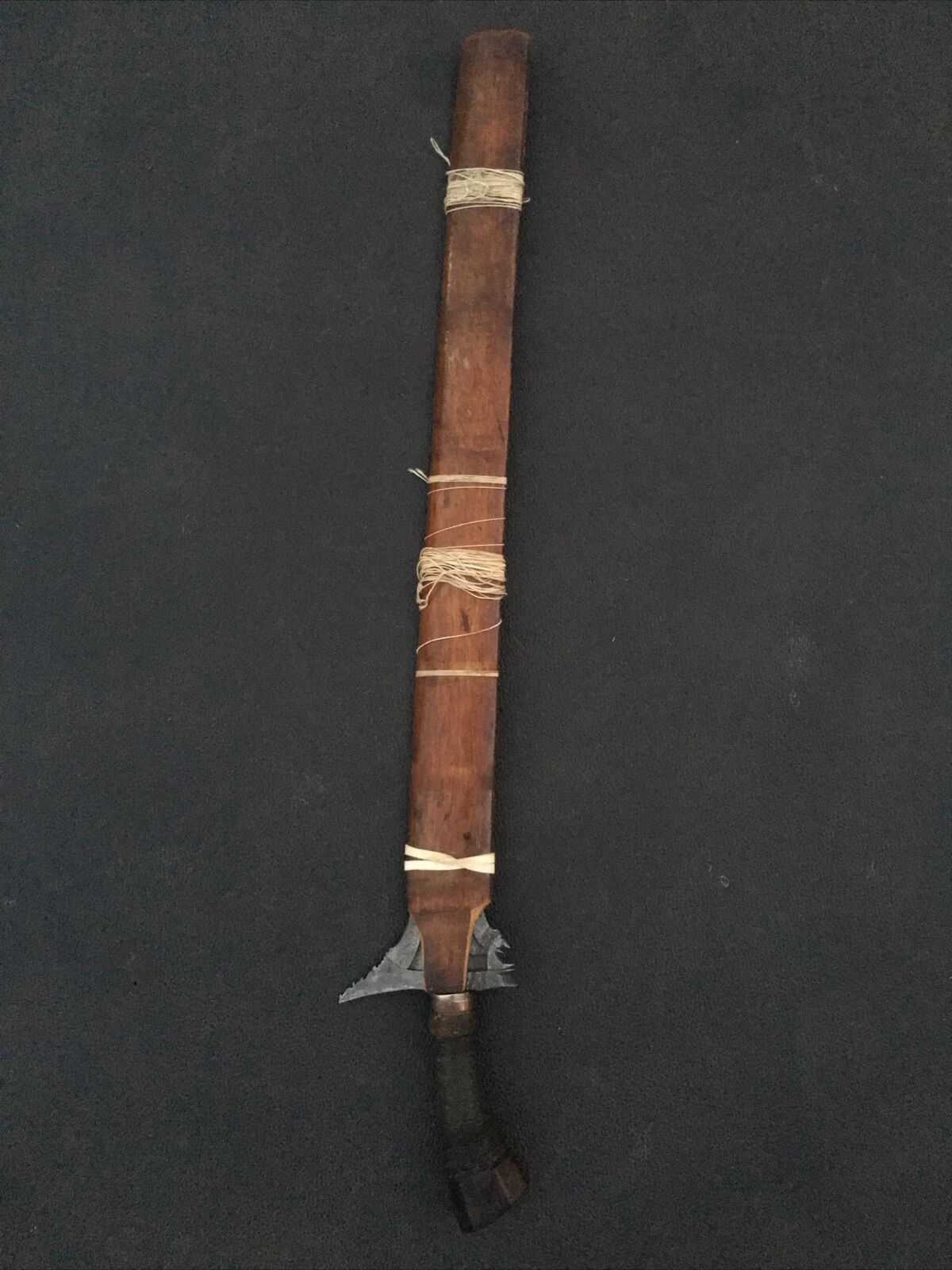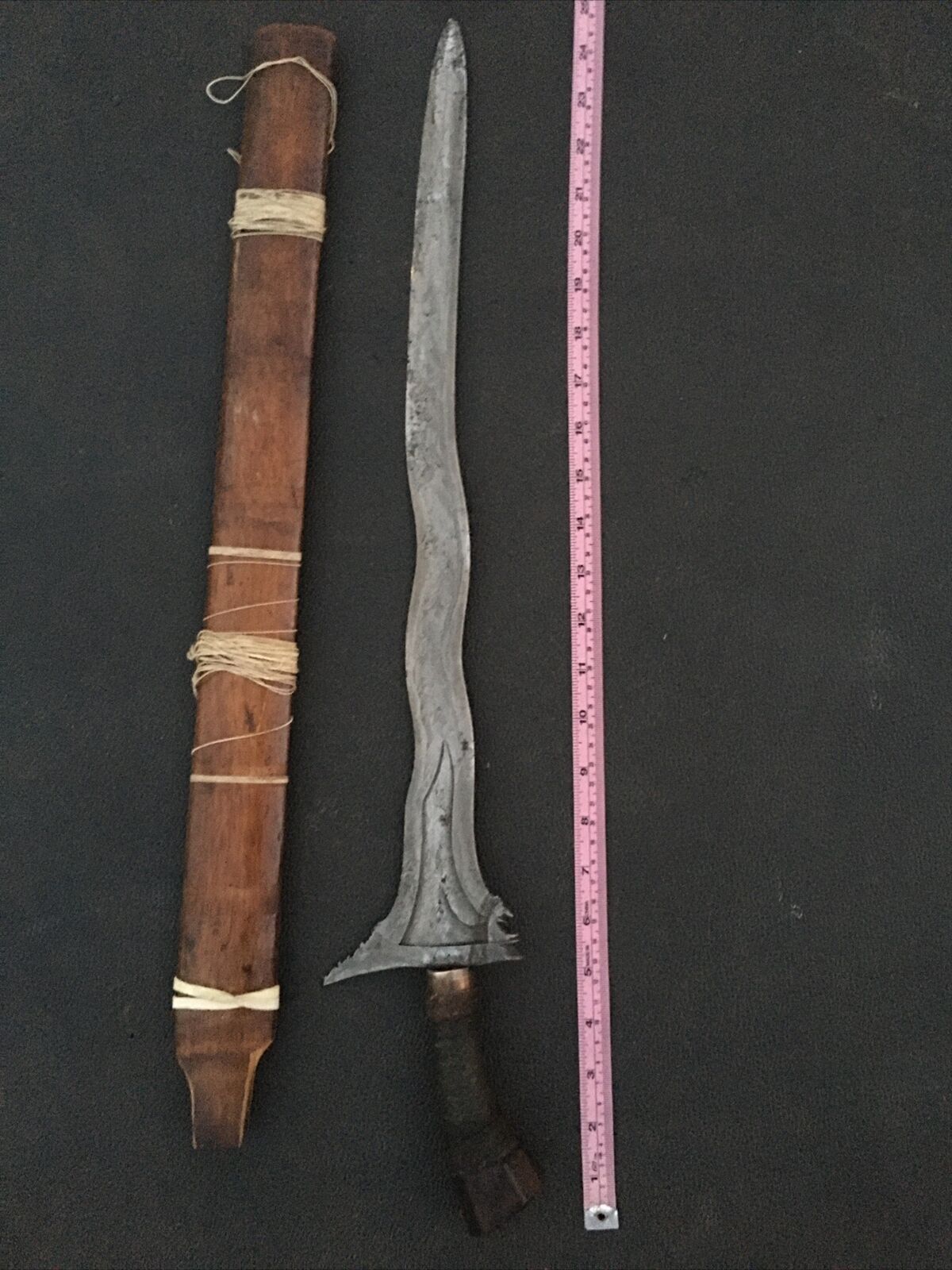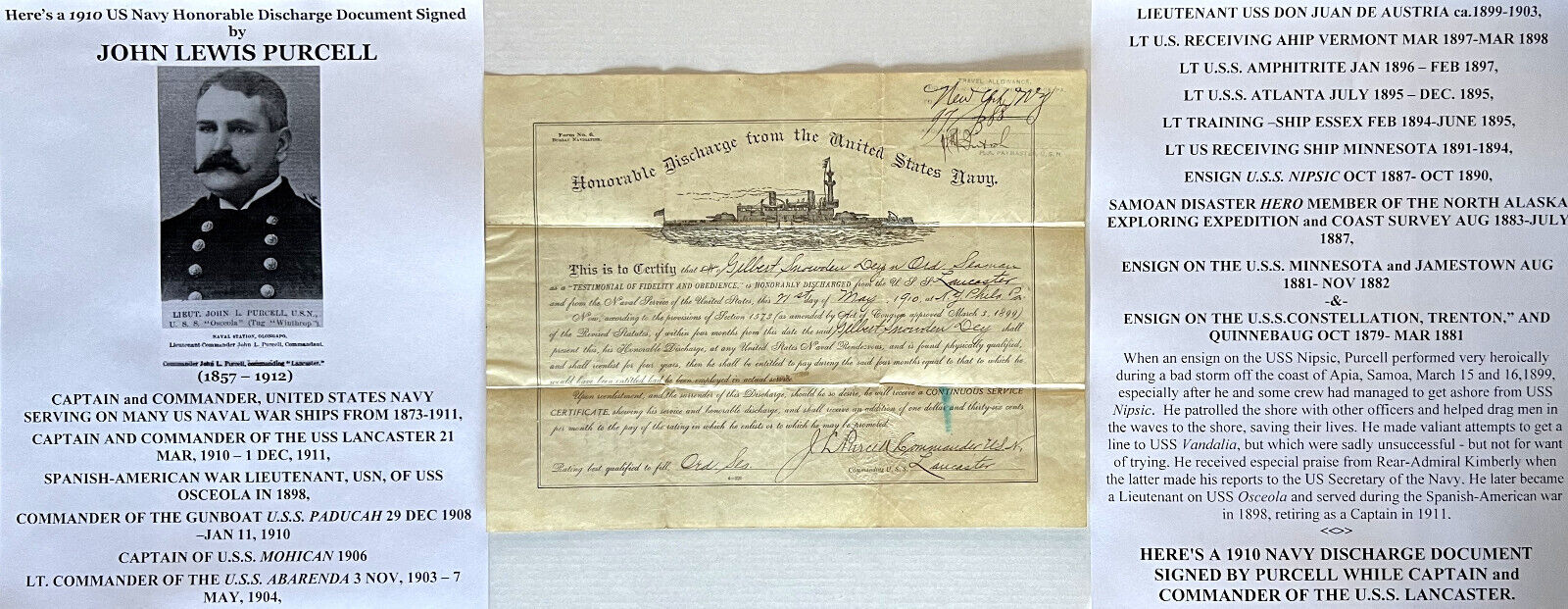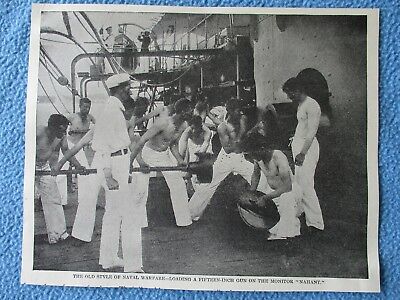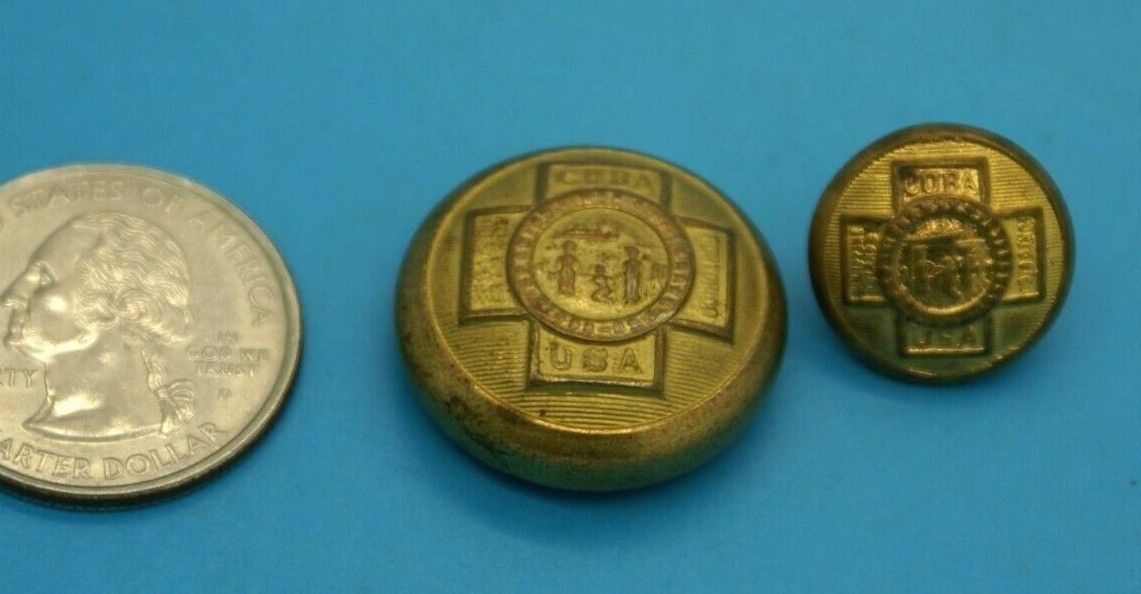-40%
Antique VG Early Period Filipino Archaic Twistcore Moro Kris Sword w/Rare Gangya
$ 1044.91
- Description
- Size Guide
Description
Antique VG Early Period Filipino Archaic Twistcore Moro Kris Sword w/Rare Gangya.This is a classic sword of the Moro people of the southern Philippines and of the Sulu Sea areacalled a kris. The classic Moro kris is based heavily on the Indonesian keris but is distinctlylarger and made purposefully for fighting. The kris has always been the most famous of all Moro weapons and there are a wide set of variation of blade types, handle forms, and materials.Generally all kris blades are wide at the base, double-edged, and can be waved, half-waved halfstraight,or straight in which case they were more practical in combat. Older kris had fewerwaves and the waves were deeper and wider. Over time the waves became shallower, tighter, andmore numerous and therefore required greater skill to prevent the blade bouncing off or beingstuck in an enemys body. The higher number of waves meant the more potent the kris was intalismanic power such as this example. Sometimes engravings (often filled in with brass or silverinlay) are found on the blade in okir motifs (vines, foliage, etc.), Arabic script, or other esoteric motifs such as this example in the Collection. This example in the Collection is a rare example of early workmanship referred to as an archaic pattern and displaying the rare blade form with a twistcore pattern. The archaic form kris are generally smaller in form, have more delicate carving and fullering, and displaying a more graceful curvature to the luks and the blade itself. The hilt is a horsehoof pattern and thestyle of blade is more reminiscent of Malaysian forms, though the twistcore patterning and thelarge heavy form are classically Moro. The hilt form is simple fighting style while the 5 lukblade has a graceful curve and form reminiscent of so called 18th century Sulu kris. The asangasang clamp is missing. It is likely that the blade is earlier than both the hilt and scabbard and potentially 18th century workmanship. The scabbard is a distinct form that does not include the wings on the side of the upper portion of the scabbard and which are attributed as Maguindanao.Very rare Early example, possibly 18th century to early 19th.Total Length (inside scabbard if present) : 27 1/2" Blade Length : 20 1/4" References:1. Cato, R. (1996) Moro swords. Graham Brash: Singapore2. Barados, D., (1995) Land of the Morning: Treasures of the Philippines, San Francisco Craft &Folk Museum, 1995.3. Casal, G. et al, (1981) The People and Art of the Philippines, UCLA Museum of CulturalHistory4. Combes, F. (1667) Historia de Mindanao y Joló, por el p. Francisco Combés ... Obra publicadaen Madrid en 1667, y que ahora con la colaboración del p. Pablo Pastells ... sacanuevamente á luz W. E. Retana. Madrid: [Viuda de M. Minuesa de los Rios]5. Krieger, H. W. (1926). The collection of primitive weapons and armor of the Philippineislands in the United States National museum. Washington: Govt. Print. Off.6. Macao Museum of Art. (2007). History of Steel in East Asia. Macao Museum of Art. Macau7. Wetzler, S. (2020) Steel and Magic. Edged Weapons of the Malay Archipelago. EditionFichter, Frankfurt am Main
ADDITIONAL SHIPMENT TERMS INCLUDE: Buyer Indemnifies Seller and Assumes Full Liability for Safety along with Full Responsibility for Compliance with Importation and Local Laws Including Age Restrictions. Due to recent rate hikes, we reserve the right to make adjustments to shipping cost when auto calculated thru eBay and it costs shipper more than was paid for shipping when terms are buyer pays shipping.
Certain eBay Restrictions on Shipping Apply Including Exclusions & Limitations on Shipping Loss Claims. Please Inquire with Your eBay Buyers Support.
COLLECTIBLES, MILITARIA AND ANTIQUES SUCH AS THIS ITEM ARE NOT SUITABLE OR INTENDED FOR ANY PURPOSE OTHER THAN DISPLAY, COLLECTION, RESEARCH/STUDY & VERY SAFE AND GENTLE HANDLING.
